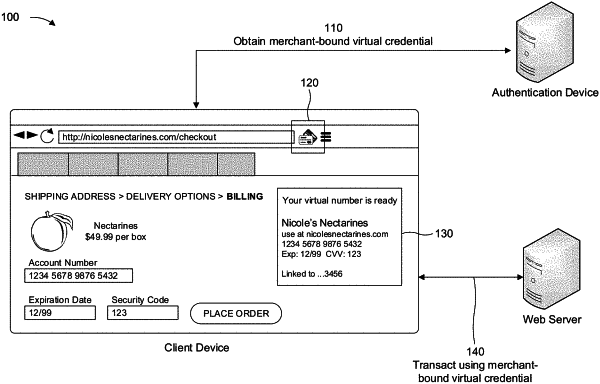| CPC H04L 63/0876 (2013.01) [G06F 16/955 (2019.01); G06Q 20/351 (2013.01); G06Q 20/385 (2013.01); G06Q 20/3821 (2013.01); G06Q 30/018 (2013.01); H04L 67/535 (2022.05); G06Q 40/02 (2013.01)] | 20 Claims |

|
1. A system for authenticating virtual credentials, the system comprising:
one or more memories; and
one or more processors, communicatively coupled to the one or more memories, configured to:
receive information related to website browsing activity at a client device,
wherein the information related to the website browsing activity includes information associated with a web address for a current website where information associated with a virtual credential was entered, and
wherein the website browsing activity includes input of the information associated with the virtual credential in one or more fields of the current website without user interaction with a user interface element to submit the virtual credential for authentication;
identify one or more valid web addresses associated with the virtual credential,
wherein the virtual credential is valid only for an entity associated with the one or more valid web addresses, and
wherein the one or more valid web addresses associated with the virtual credential includes an original web address for which the virtual credential was created and one or more valid aliases for the original web address;
compare the web address for the current website where information associated with the virtual credential was entered with the one or more valid web addresses associated with the virtual credential; and
transmit, to the client device, information to indicate whether the website browsing activity is authenticated based on the comparison of the web address for the current website where the information associated with the virtual credential was entered and the one or more valid web addresses associated with the virtual credential.
|